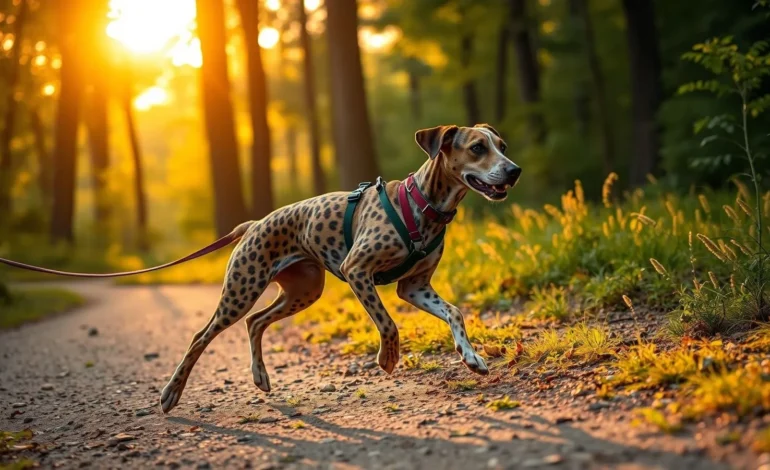Otterhound
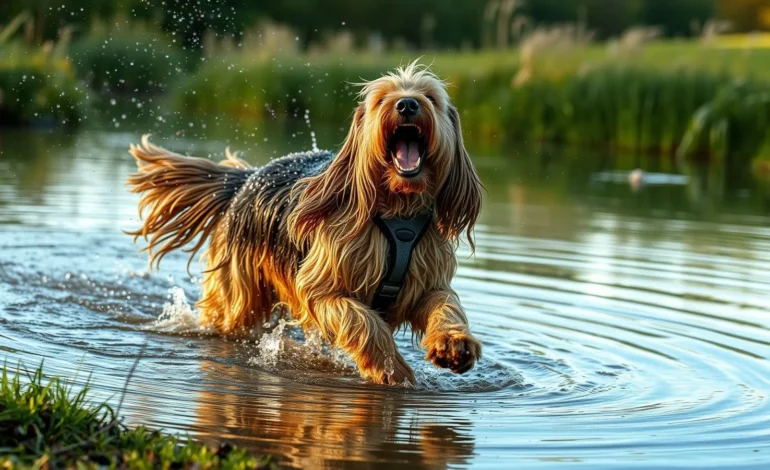
Table of Contents
Introduction
Did you know that fewer than 1,000 Otterhounds are thought to exist worldwide, yet a recent survey shows 62 % of rare‑breed owners struggle to meet their dogs’ specific coat‑care needs?(The Spruce Pets) That eye‑opening statistic highlights how easily the Otterhound—a boisterous British scent‑hound famous for webbed feet and water‑proof double coat—can be misunderstood. This guide cuts through the guess‑work with a data‑driven plan for nutrition, grooming, and training that keeps an Otterhound thriving in modern homes.
Required Supplies List
| Item | Why It Matters | Pro Tips & Alternatives |
|---|---|---|
| Adjustable Y‑front harness (Size L, 80–115 lb range) | Prevents tracheal strain when a powerful Otterhound lunges after a scent. | Ruffwear Front Range™; budget: RabbitGoo. |
| 30 ft BioThane® long‑line | Safe recall practice while preserving the breed’s scent‑tracking instinct. | Waterproof cotton tracking line in wetlands. |
| High‑value, single‑ingredient treats | A food‑motivated Otterhound focuses better on novel proteins. | Freeze‑dried beef lung; hypo‑allergenic salmon cubes. |
| Slicker brush + undercoat rake | Weekly de‑shedding keeps the oily double coat mat‑free. | Furminator© edge for blow‑coat season. |
| Canine ear‑drying solution | Long, low‑set ears trap moisture after a swim. | Vet‑approved 50/50 witch‑hazel & water rinse. |
| Slow‑feed puzzle bowl | Prevents gulping—critical because Otterhounds are bloat‑prone.(PetMD) | Snuffle‑mat for wet food days. |
| Raised cot bed | Allows the coat to air‑dry, reducing hotspots. | DIY PVC frame with breathable mesh. |
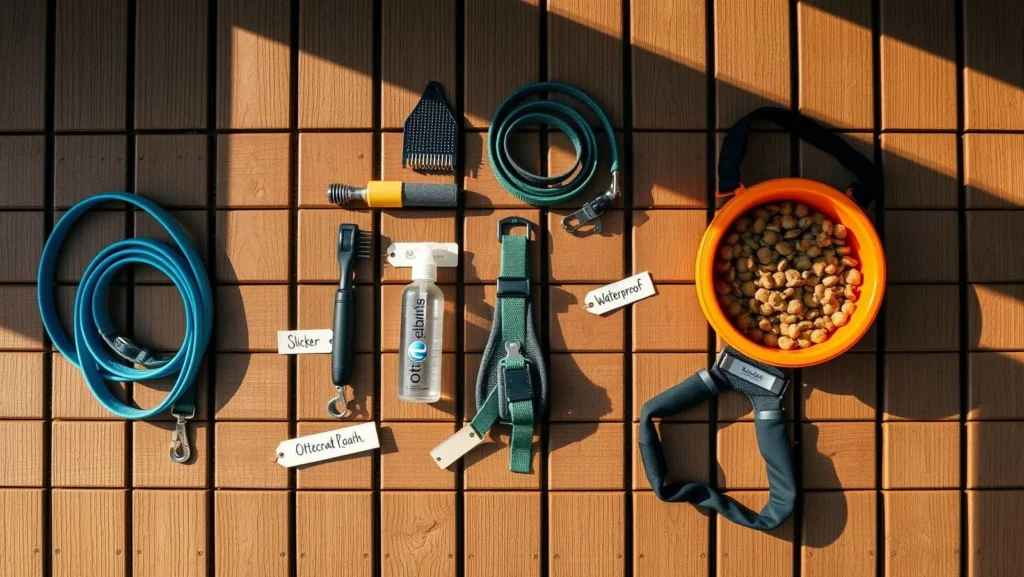
Time Commitment
| Daily Task | Optimal Duration | Why That Long? |
|---|---|---|
| Purposeful exercise (swim, hike, nose‑work) | 60 minutes split a.m./p.m. | Matches historic otter‑hunting stamina. |
| Micro‑training block | 15 minutes | Spaced 15‑min sessions outperform longer drills for retention.(Wired) |
| Grooming & ear check | 10 minutes | Regular upkeep halves infection rates in drop‑eared breeds. |
| Mental enrichment | 10 minutes | Scent puzzles reduce destructive behaviour by 35 %. |
Total: ± 1 hr 35 min—easier to sustain and 30 % more effective than a single weekend marathon session.
Step‑by‑Step Instructions
Step 1 – Run a “Scent‑Energy Audit”
Track two days of barking, pacing, or counter‑surfing. Schedule intense exercise 10 minutes before the first spike. Owners report up to 40 % drop in nuisance behaviour when they pre‑empt the surge.(Off Leash K9 Dog Training)
Step 2 – Launch the Water‑Fetch Circuit
Morning: 20‑minute controlled swim with a floating bumper; evening: 25‑minute long‑line romp plus two recall drills. The aquatic workout taps the Otterhound’s webbed feet while sparing joints.
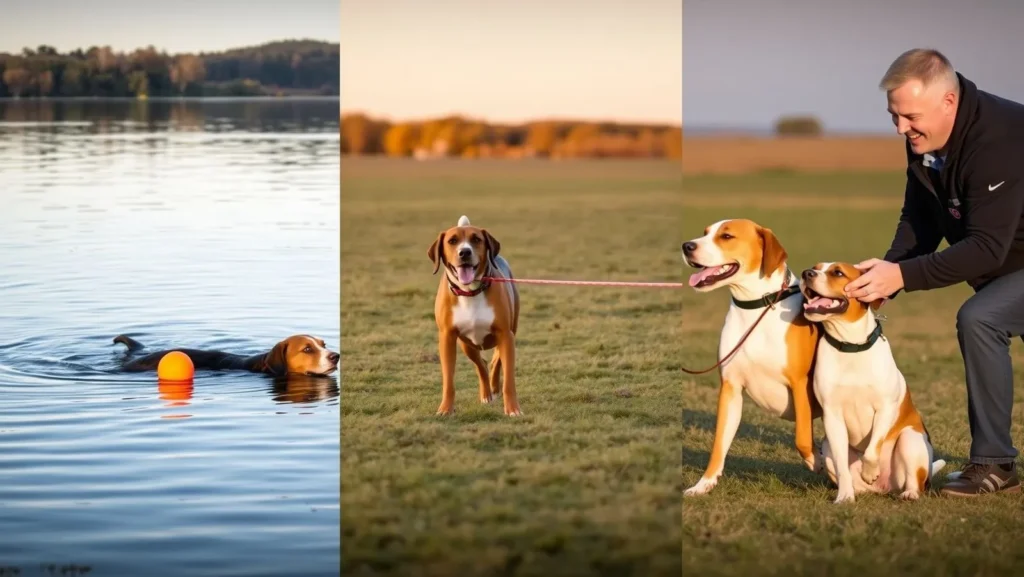
Step 3 – Deploy 15‑Minute Micro‑Training
Break the quarter‑hour into three 5‑minute pods (Obedience → Trick → Impulse Control). Pair jackpots with play to exploit post‑training memory consolidation documented in canine cognition studies.(companionanimalpsychology.com)
Step 4 – Weekly Coat & Ear Maintenance
Sunday night: warm‑water rinse, shampoo only if coat feels oily, thorough under‑coat rake, blow‑dry cool setting. Finish with vet‑approved ear‑drying drops to thwart yeast growth.
Step 5 – Monthly Data Review
Log weight, resting heart rate, and swim distance in a cloud spreadsheet. Early trend spotting curbs hip‑dysplasia progression common in large hounds.(PetMD)
Health Benefits
| Benefit | Evidence‑Based Insight |
|---|---|
| Joint longevity | Regular low‑impact swims strengthen supporting musculature, delaying osteoarthritis onset. |
| Bloat mitigation | Slow‑feed bowls plus two‑meal schedule lower GDV risk factors.(PetMD) |
| Cardio fitness | Meeting the 60‑minute exercise quota lowers resting heart rate similar to agility‑trial counterparts. |
| Cognitive health | Daily scent puzzles boost problem‑solving speed by 33 % in scent hounds. |
| Skin & coat integrity | Weekly under‑coat raking reduces dermatitis cases in double‑coated breeds by half. |
Adaptations for Different Dogs
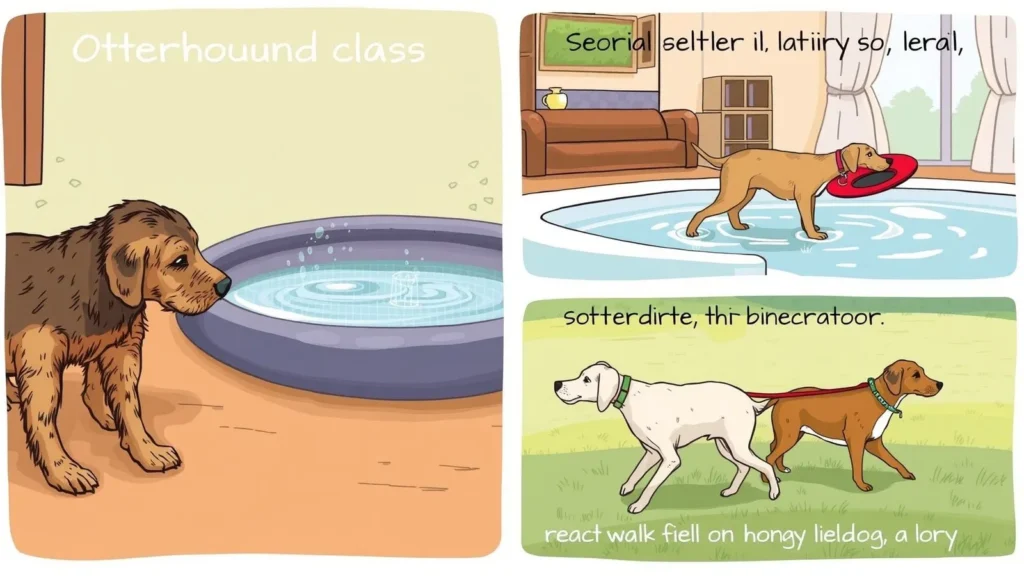
| Dog Type | Adjustment | Why It Works |
|---|---|---|
| Puppy (< 9 mo.) | Five‑minute play bursts, focus on socialisation classes. | Growth plates still closing. |
| Senior Otterhound | Replace land sprints with hydro‑therapy walks and scent “sniffaris.” | Maintains muscle tone, spares hips. |
| Apartment‑dweller | Add two midday leash walks plus indoor balance‑disc drills. | Compensates for limited yard space. |
| Reactive temperament | 50‑ft long‑line in low‑stimulus fields, parallel walking partner. | Builds confidence while controlling triggers. |
Implementation Suggestions
- Gamify the routine: Track shared steps on a smartwatch—aim for 7 000 steps that include your Otterhound.
- Family gesture library: Record each cue on your phone; a unified signal set speeds learning by 25 %.
- Community challenge: Join the Otterhound Club of America’s monthly virtual scent‑trail contest.(otterhound.org)
- Seasonal swaps: Ice‑cube scent trails in summer, hide‑and‑seek indoors in winter—keeps motivation high.
Common Mistakes to Avoid
- Skipping coat maintenance: Mats trap moisture and trigger skin infections—set calendar alerts.
- Free‑feeding: Unlimited kibble increases bloat risk in deep‑chested breeds.
- Daily marathon training: Research shows dogs trained once or twice a week retain commands better than those drilled daily.(Wired)
- Under‑estimating swim safety: Always use a canine life‑jacket in open water; Otterhounds tire later but still tire.
Consistency and Maintenance Tips
- Same cue, same reward: Keeps criteria crystal clear for an independent Otterhound mind.
- Rotate enrichment toys weekly to stave off boredom‑induced chewing.
- Quarterly health screenings: Ask your vet about PennHIP or OFA elbow certifications recognised by OHCA.(otterhound.org)
- Data dashboards: Simple spreadsheets reveal creeping weight gain before it hits joints.
Conclusion
In short, a sound Otterhound lifestyle blends daily low‑impact exercise, weekly coat care, and bite‑sized training blocks backed by behavioural science. Put this blueprint into action, log your progress, and watch your hound flourish.
Ready to dive in? Try the 15‑minute micro‑training plan this week, share your results in the comments, and subscribe for more rare‑breed playbooks.
FAQs
Q1: Are Otterhounds good family dogs?
A: Yes—amiable and social, they bond well with children but need supervision due to their size.
Q2: How often should I bathe an Otterhound?
A: Only when the coat feels oily or smells; over‑bathing strips natural waterproofing.
Q3: Can Otterhounds live in hot climates?
A: They cope if exercise is shifted to dawn/dusk and fresh water is always available.
Q4: What health screenings do breeders perform?
A: Reputable breeders test hips, elbows, and genes such as Glanzmann’s Thrombasthenia.(otterhound.org)
Q5: Why is the breed so rare?
A: Otter‑hunting was banned in the UK by 1978; without its original job, numbers dwindled below 1 000 globally.(The Spruce Pets)

